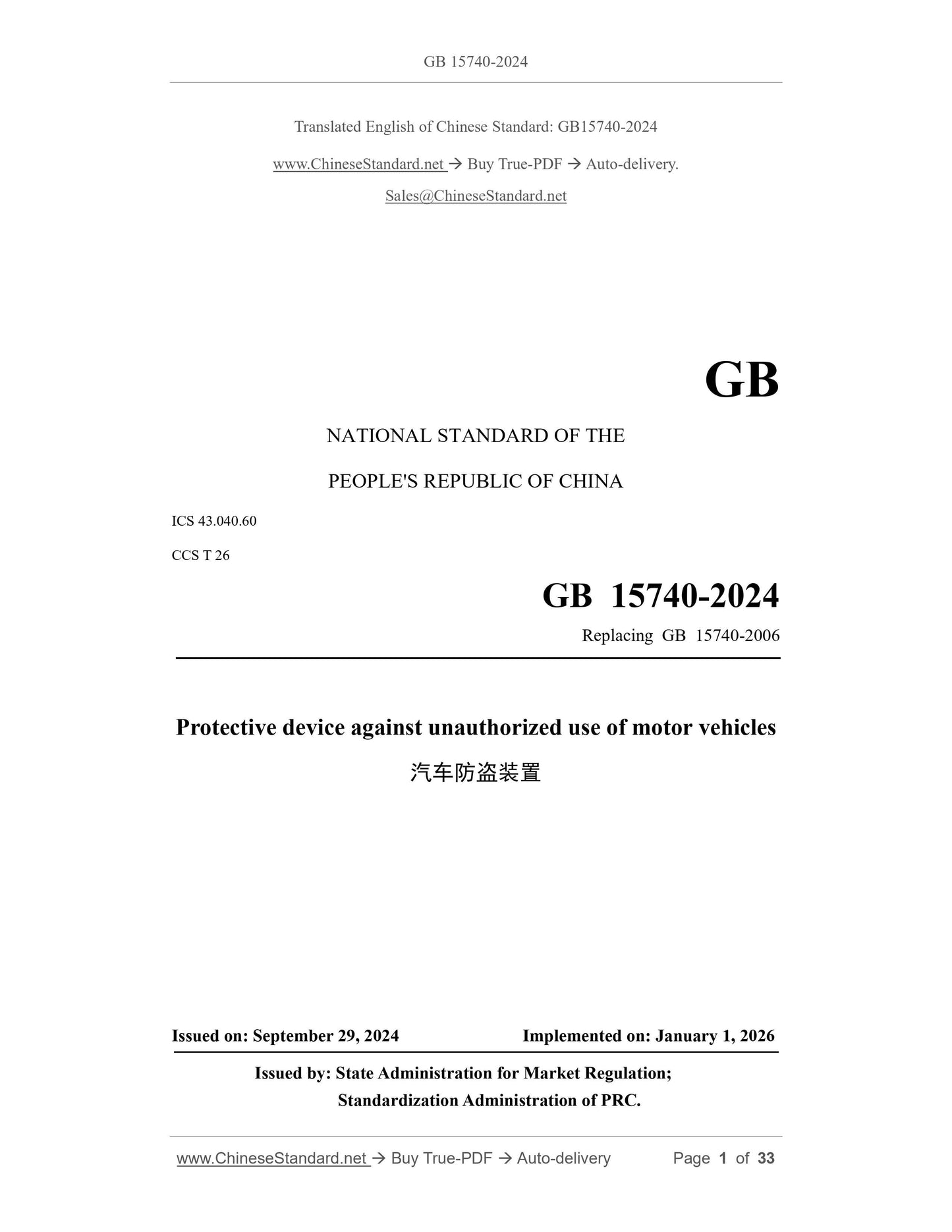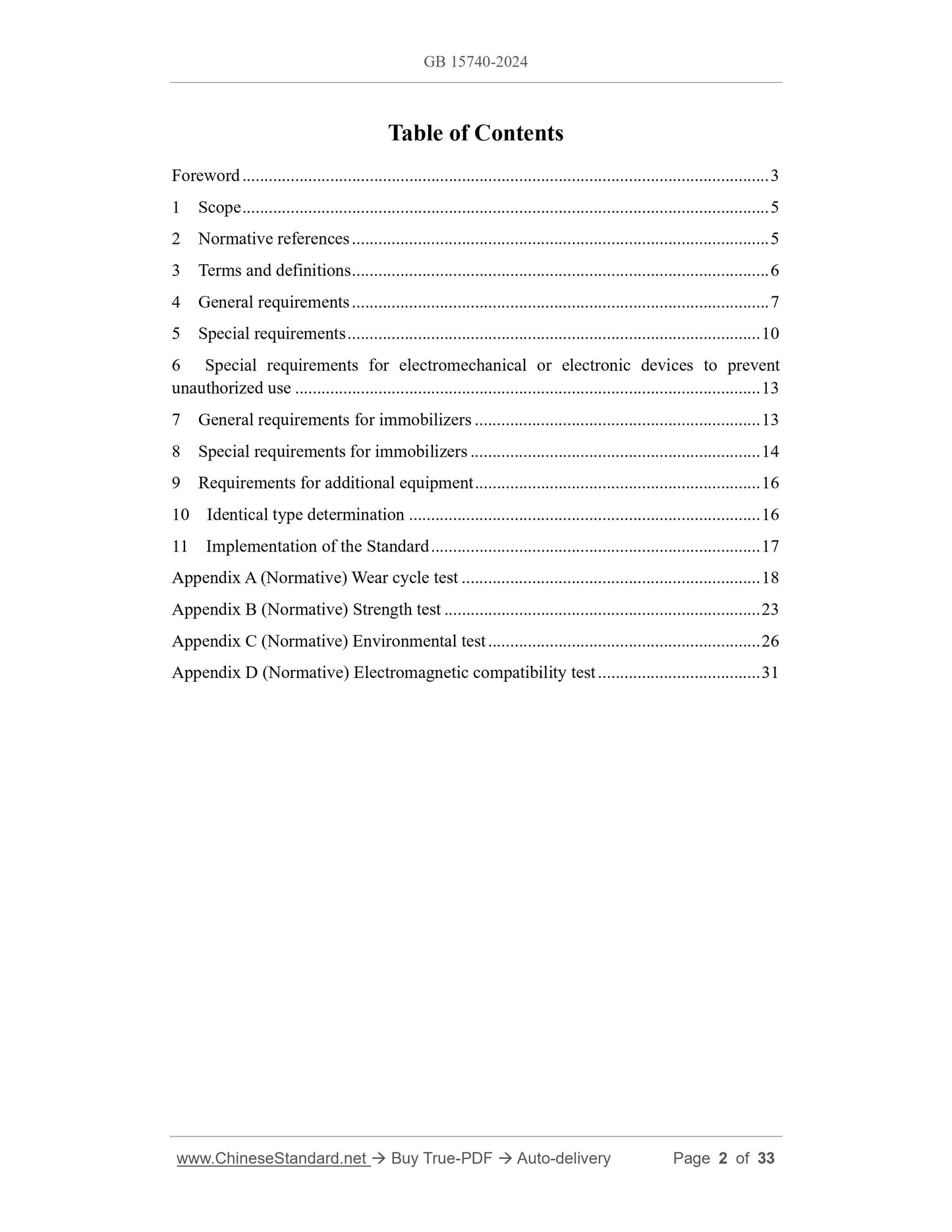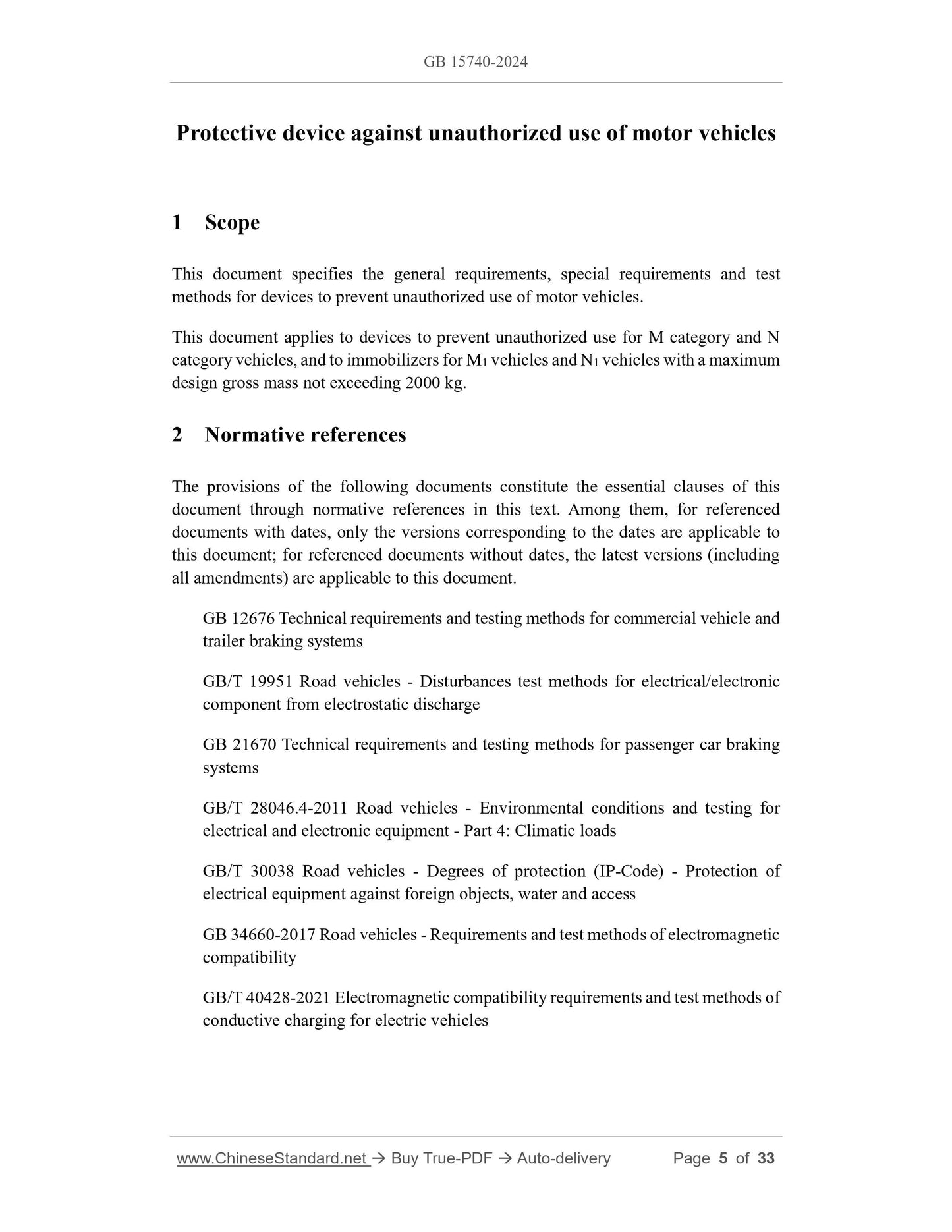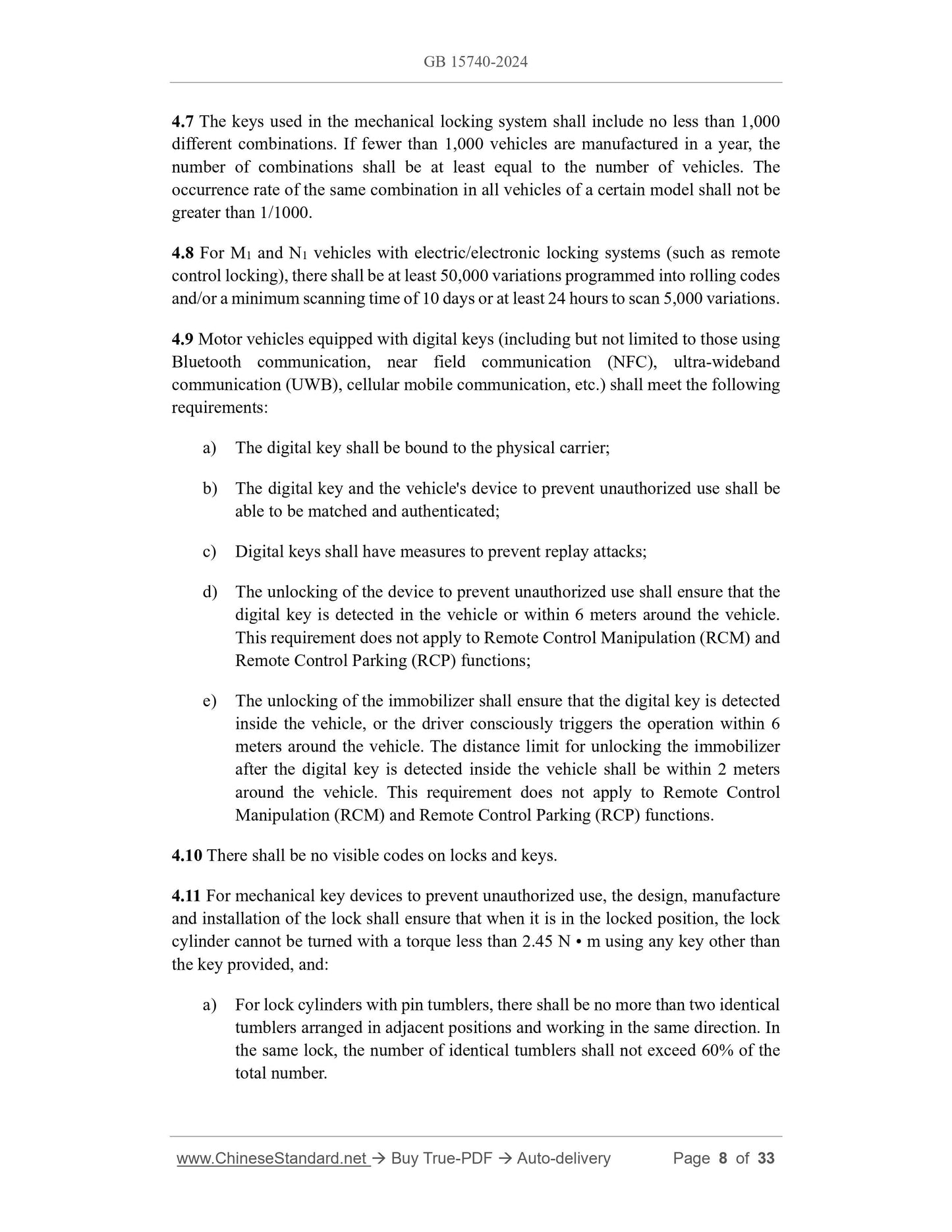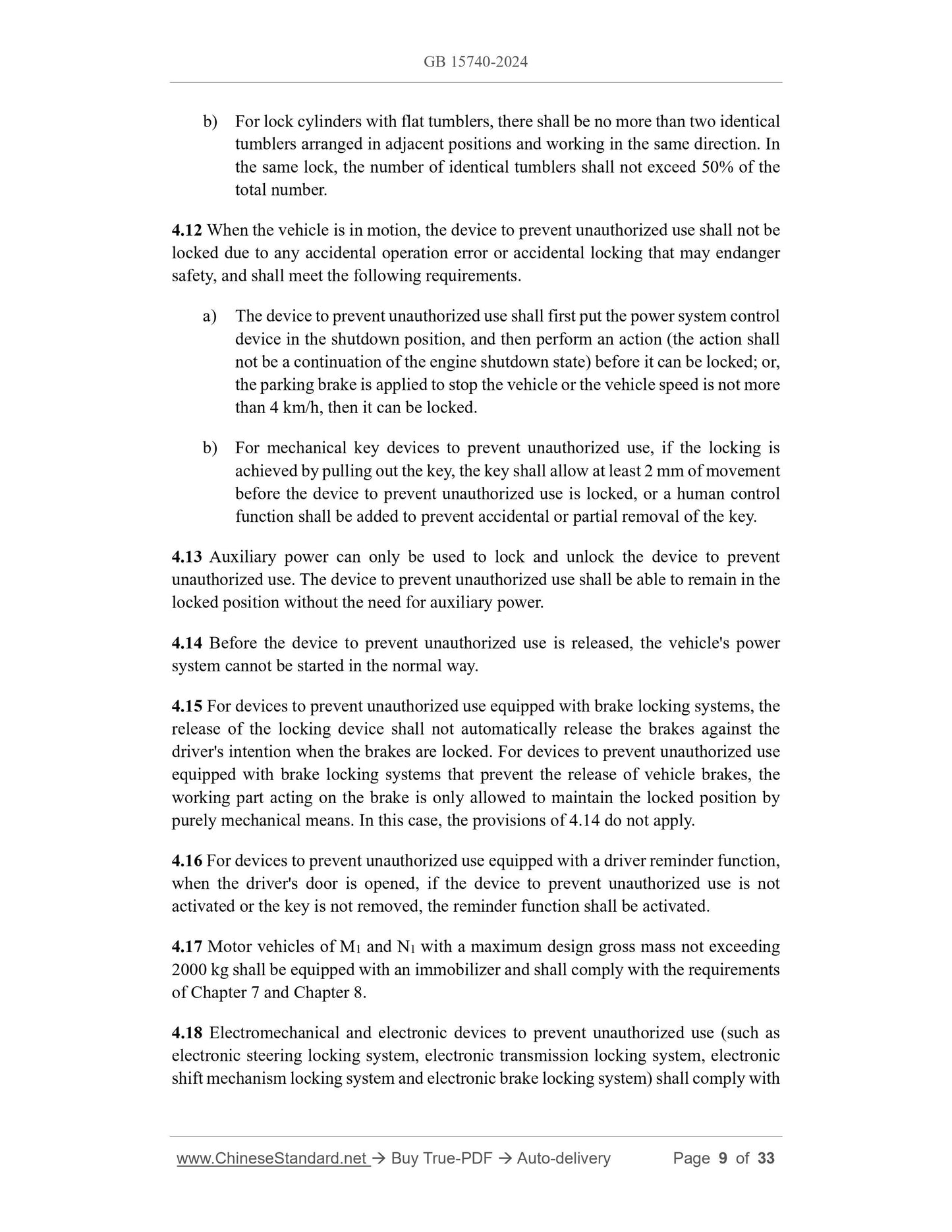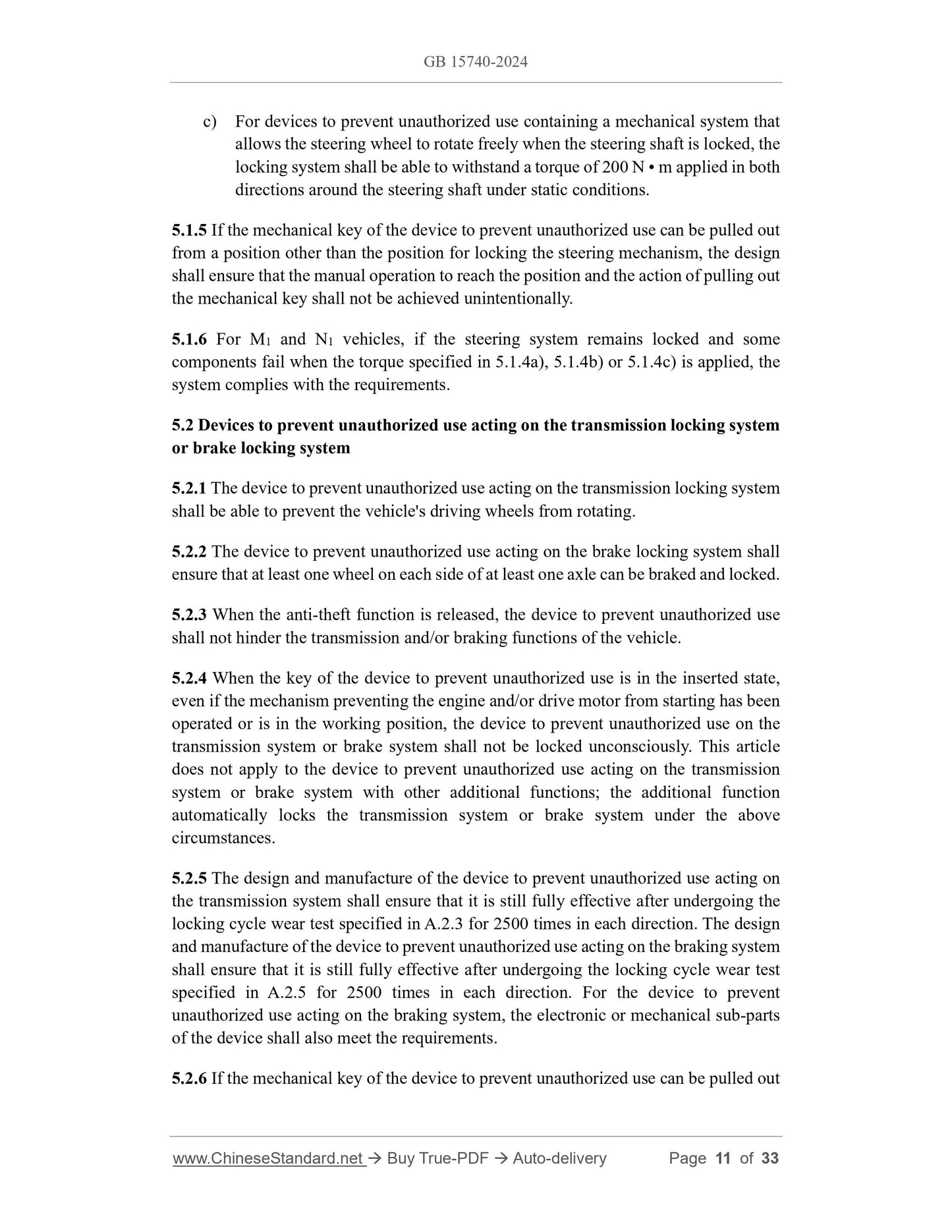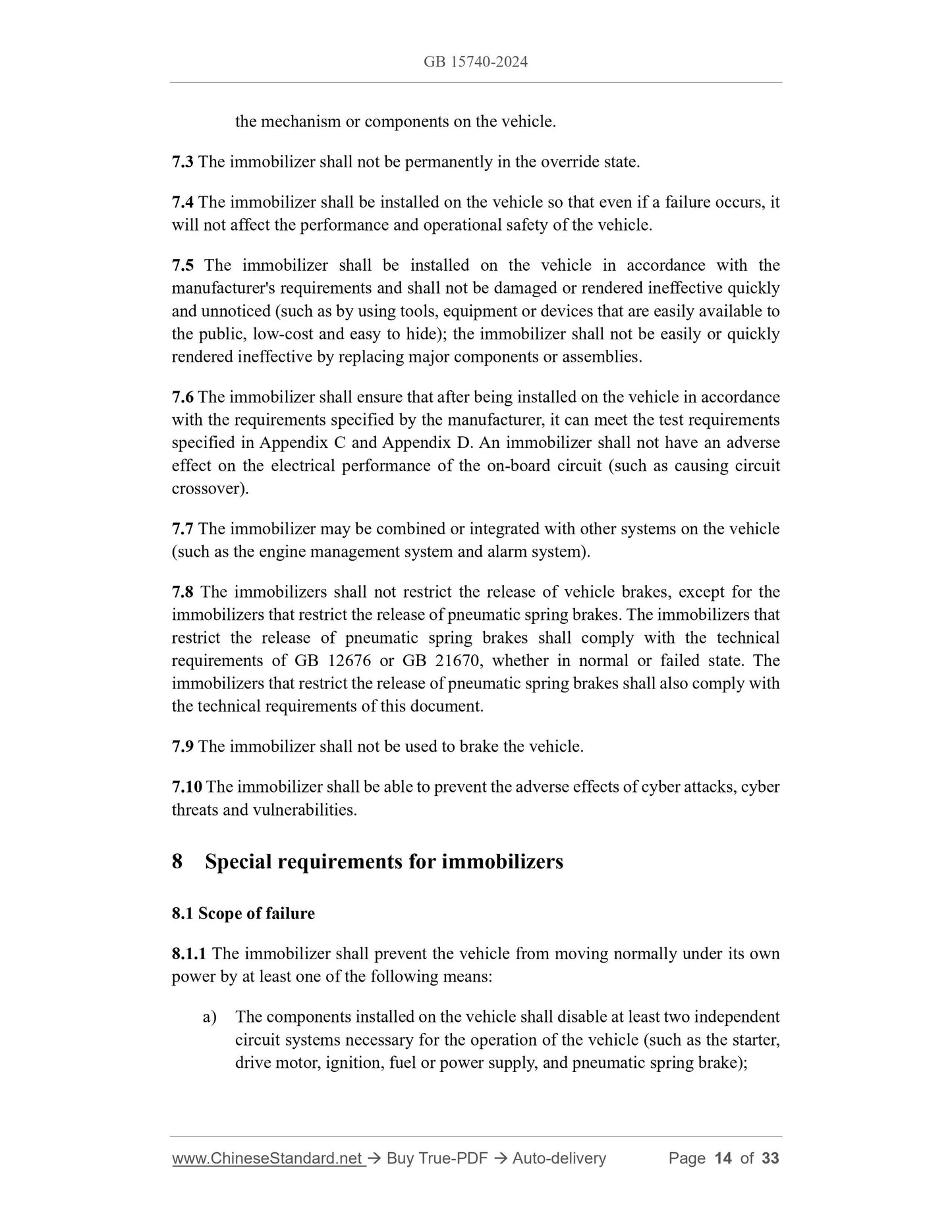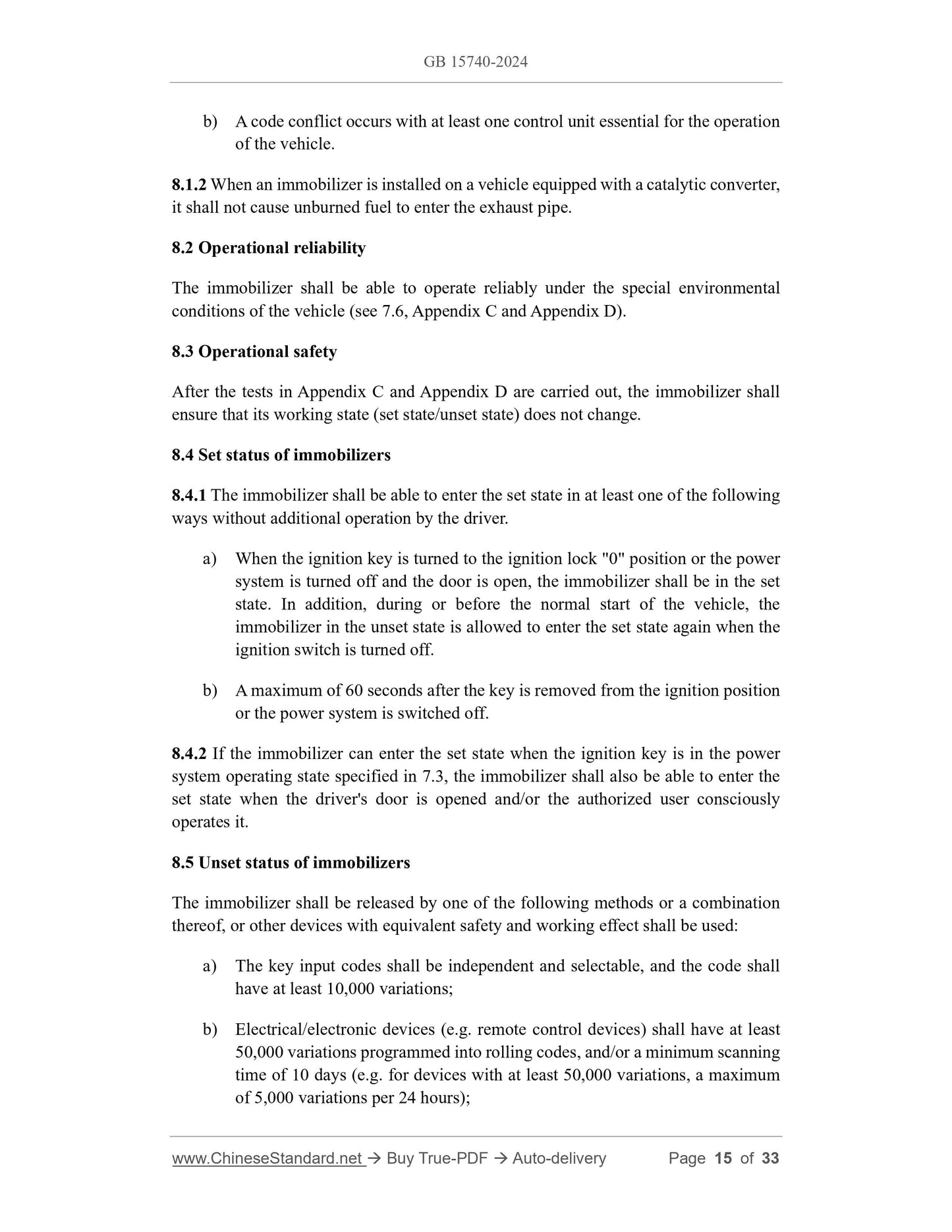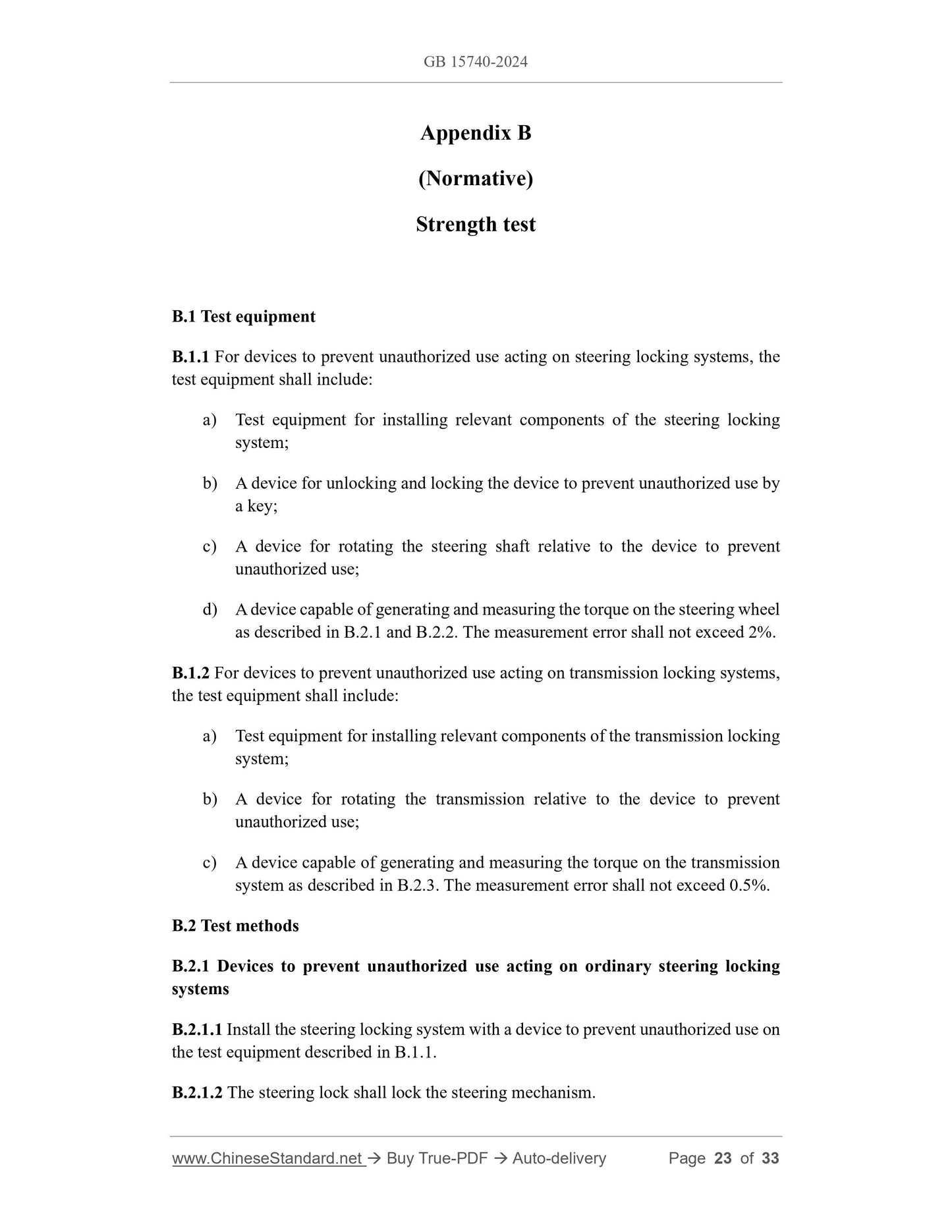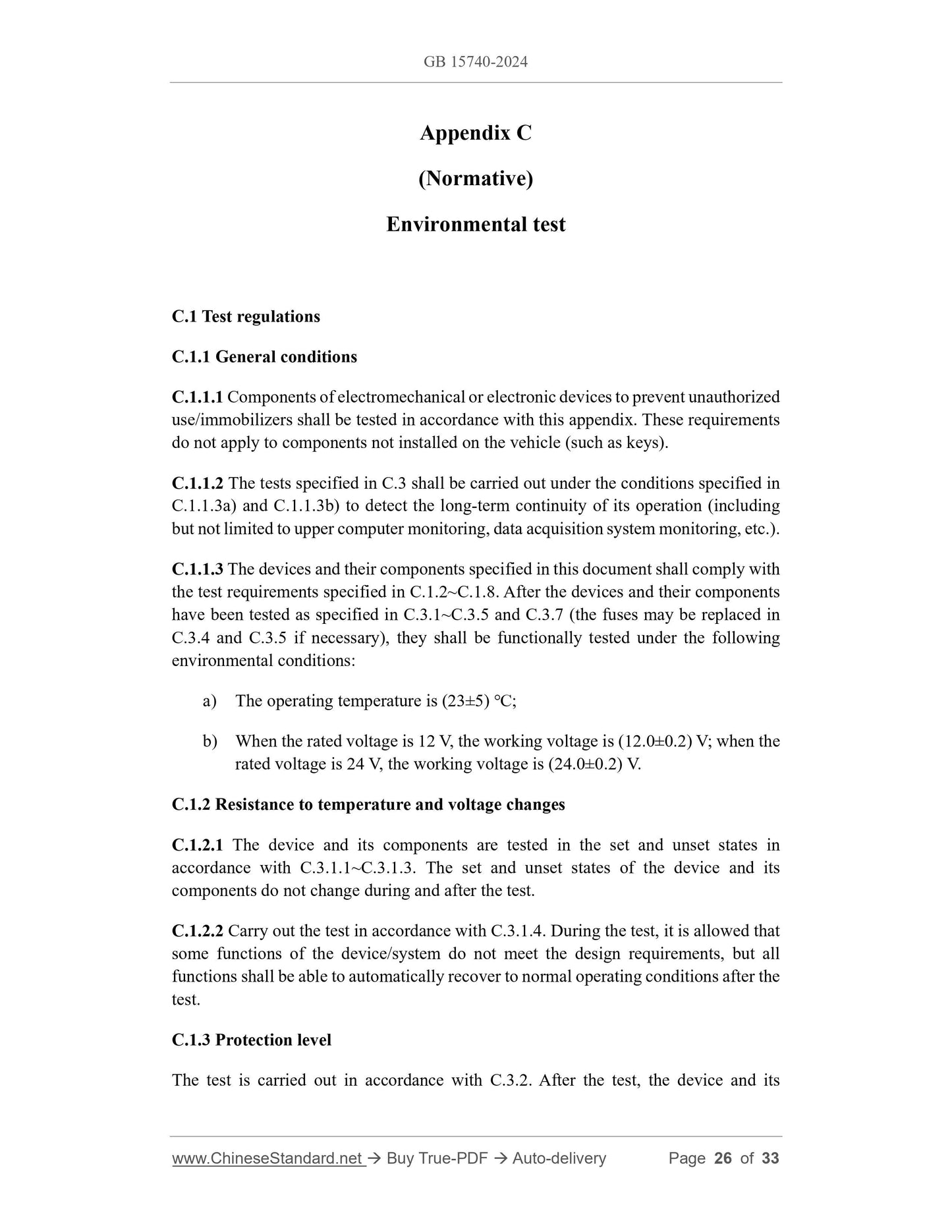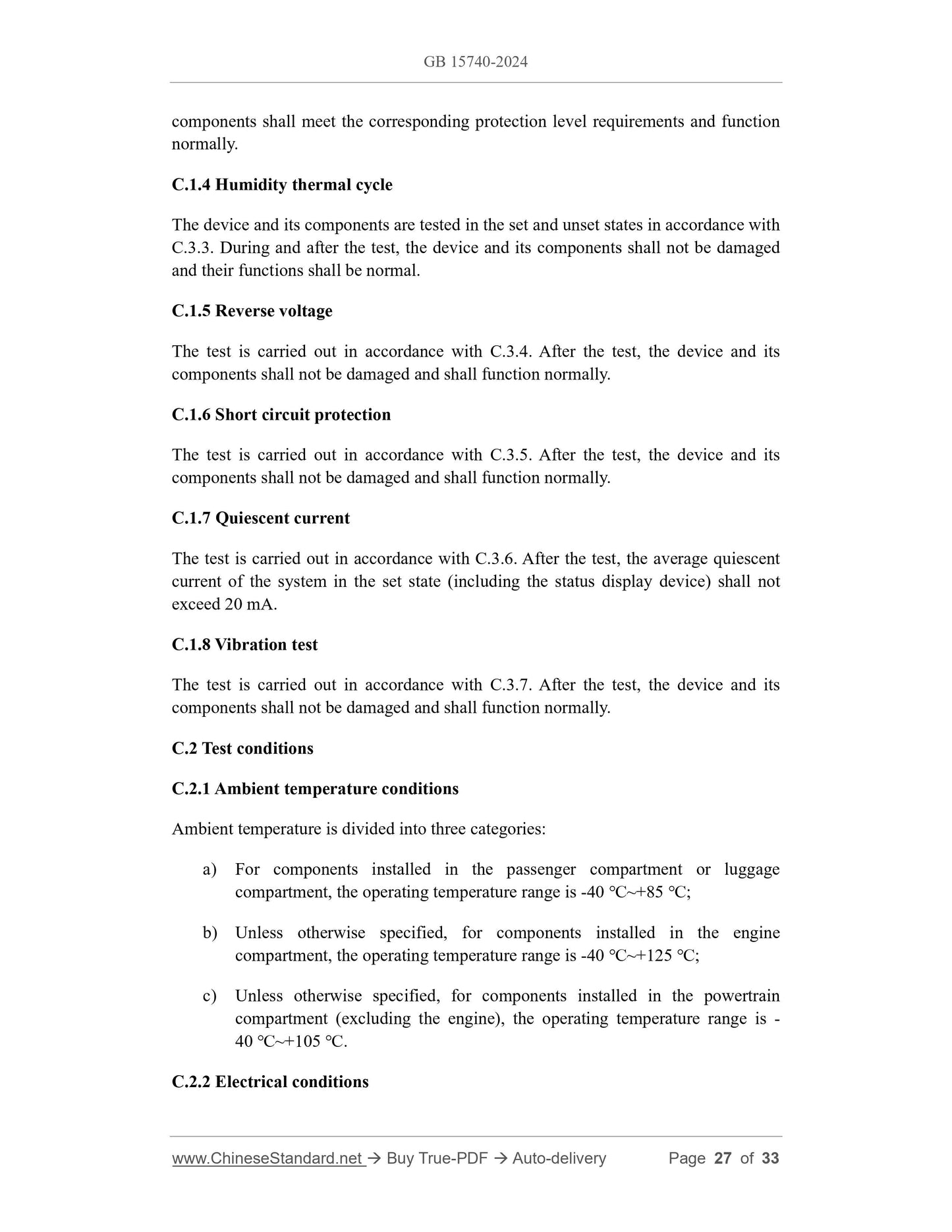1
/
of
12
www.ChineseStandard.us -- Field Test Asia Pte. Ltd.
GB 15740-2024 English PDF
GB 15740-2024 English PDF
Regular price
$320.00
Regular price
Sale price
$320.00
Unit price
/
per
Shipping calculated at checkout.
Couldn't load pickup availability
GB 15740-2024: Protective device against unauthorized use of motor vehicles
Delivery: 9 seconds. Download (and Email) true-PDF + Invoice.Get Quotation: Click GB 15740-2024 (Self-service in 1-minute)
Newer / historical versions: GB 15740-2024
Preview True-PDF
Scope
This document specifies the general requirements, special requirements and testmethods for devices to prevent unauthorized use of motor vehicles.
This document applies to devices to prevent unauthorized use for M category and N
category vehicles, and to immobilizers for M1 vehicles and N1 vehicles with a maximum
design gross mass not exceeding 2000 kg.
Basic Data
| Standard ID | GB 15740-2024 (GB15740-2024) |
| Description (Translated English) | Protective device against unauthorized use of motor vehicles |
| Sector / Industry | National Standard |
| Classification of Chinese Standard | T26 |
| Classification of International Standard | 43.040.60 |
| Word Count Estimation | 22,261 |
| Date of Issue | 2024-09-29 |
| Date of Implementation | 2026-01-01 |
| Older Standard (superseded by this standard) | GB 15740-2006 |
| Issuing agency(ies) | State Administration for Market Regulation, China National Standardization Administration |
Share
